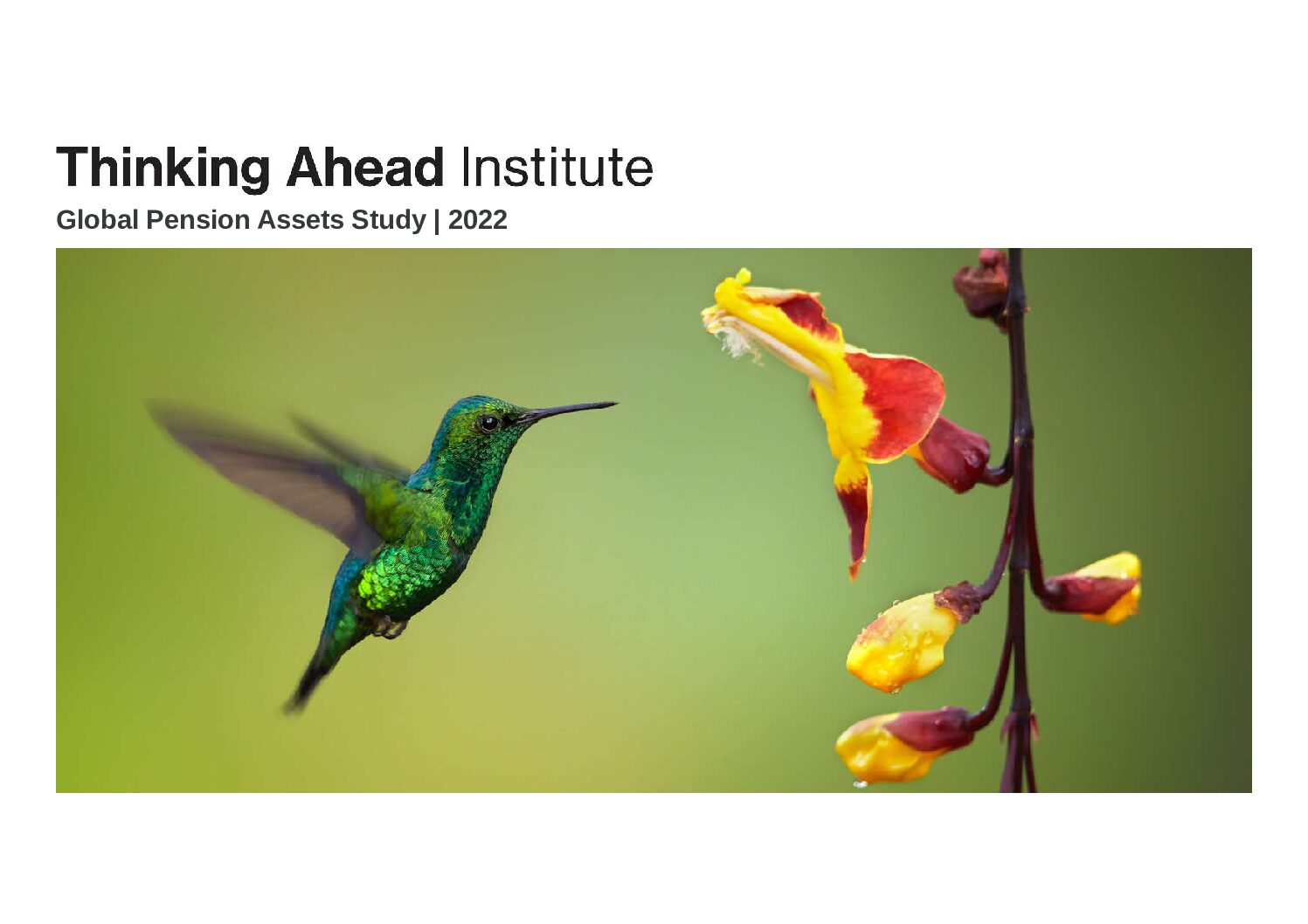About the Study
The Global Pension Assets Study estimates global pension fund assets across 22 major pension markets (the P22). These geographies now total a record US$56.6 trillion in pension assets and account for 76% of the GDP of these economies. The study, conducted by WTW and the Thinking Ahead Institute since the 1990s, includes an analysis of the seven largest markets (the P7): Australia, Canada, Japan, Netherlands, Switzerland, UK and US comprise 92% of total pension assets, unchanged from the previous year.
Concentration in pensions markets has increased, even as relatively smaller countries have also seen respectable growth in their pension assets

Key findings: the last 20 years of global pension assets
- #1 market: Australia
20-year pension asset growth of 11.3% per annum, in USD terms - #1 pension design: Defined Contribution
The 20-year growth of DC in the P7 has been 7.8% per annum relative to 4.1% per annum for DB, in USD terms - #1 asset class: private assets
The asset allocation to real estate, private equity and infrastructure has increased from 7% to over 26% - #1 meme: governance
Pension governance is a lot stronger than 20 years ago, fanned by successive industry reviews – ERISA in the US; Myners in the UK; Royal Commission and Productivity Commission in Australia - #1 no-show: technology
Impacts on pension funds have been surprisingly light; evidenced by legacy systems that rely heavily on spreadsheets.
10 Key sustainability issues for the next 10 years
Doubling assets again in the next ten years will need global pension schemes to confront the unsustainability of the global carbon economy, and look with renewed imagination at the fundamentals of sources of return.
Marisa Hall
Investing for sustained growth is going to become an even more nuanced question in future decades. Growing demands from regulation, stakeholders and society are calling for greater clarity on sustainability-related actions. Greater accountability from asset owners will drive change in the rest of the investment value chain, while the rise in benchmarking and standardisation will place a limit on greenwashing and overclaiming.
To help the investment industry prepare for these changes, the Thinking Ahead Institute have identified 10 key sustainability issues over the next 10 years.

- Halving of emissions by 2030 demands a rapid transformation of the investments landscape – at a scale the industry has rarely experienced. This transition will be challenging and resource intensive
- Rise in S of ESG – Organisations recognise that transitioning to a sustainable future is more than achieving net-zero targets, it is about having a positive impact on the society in which they operate
- Bigger impact – Expect a heavier regulatory burden, particularly around climate-related disclosures and increased scrutiny on financial institutions’ climate actions
- Fiduciary duty evolves – The race to net zero is stretching the window of fiduciary duty interpretation beyond financial materiality
- Biodiversity loss becomes important – We expect biodiversity considerations to move up the list of priorities for governments, civil society and the financial industry
- Stewardship and engagement – We expect third-party provider strategies to come under growing scrutiny
- Culture and diversity make a difference – Net-zero and multi-stakeholder principles are supporting stronger values and more principled organisations that have a bigger purpose
- The rise of universal ownership – Pension funds boards are seeking to redefine their investment models aligned with systems thinking, by adopting the concepts of Total Portfolio Approach, 3D investing and Universal Ownership (UO)
- Technology will be an important lever, challenging existing business models and people models, requiring considerable and accelerating adaptation
- Net-zero transition is multifaceted – There is no net-zero without emerging markets. The journey to net zero should be a just transition, where the most vulnerable sections of global society should not bear a higher cost of this transition
Read the full report for more detail on asset size, concentration and weighting as well as asset allocation, DB/DC split and more.
Further reading
Global Pensions Asset Study press release
Global Pensions Asset Study podcast
Explore other TAI pension asset studies
Climate dashboard reporting – how is your portfolio impacting the planet?
Total Portfolio Approach (TPA) – A more ‘joined up’ approach to portfolio construction
With great power comes great responsibility – how changing interpretations of fiduciary duty affect institutional investors
Sustainability hub – investing for tomorrow
Culture hub – how culture creates a measurable edge for investment organisations
TAI will bring these themes to life in our member working groups. Explore our 2022 research agenda

